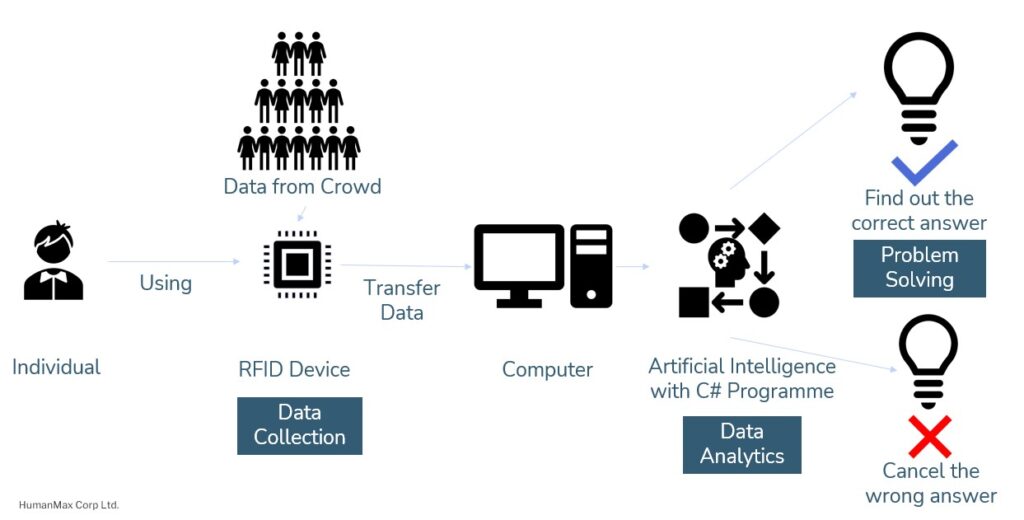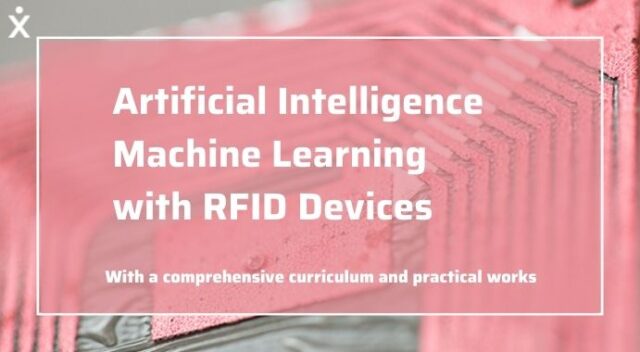Explore the fascinating field of Artificial Intelligence with comprehensive and practical workshop
HumanMax is excited to provide Hong Kong’s first educational programme
about AI machine learning and RFID technology.
By implementing contemporary programming language with RFID devices,
Students can quickly pick up the AI machine learning techniques
and build the analytic data system to solve practical problems.
Background Information

Machine learning is a branch of artificial intelligence (AI) and computer science that focuses on using data and algorithms to imitate the way that humans learn, gradually improving its accuracy. Through statistical methods, algorithms are trained to make classifications or predictions, uncovering critical insights within data mining projects. It gained importance in our daily lives with its variety of applications and design nowadays.
Radio Frequency Identification (RFID) is the wireless non-contact radio frequency waves to transfer data. It allows users to automatically and uniquely identify and track inventory and assets. By implementing machine learning algorithms with RFID devices, users can manipulate the information extracted from the data of all the RFID tag readings to analyse the best solution for the practical problems.
Course Introduction
HumanMax provides Hong Kong’s first educational programme about AI machine learning with RFID devices (AIML). This programme provides opportunities for students to work with RFID devices to collect data, perform analysis, manipulate scenarios and solve daily problems. Students will study the concept of machine learning models with C# programming language. They will learn and apply artificial intelligence tools and knowledge to create solutions to tackle practical issues at school, such as crowd control, library checking in-out and smart shopping or any observations that catch students’ eyes.
The Objectives
- An introductory course about understanding radio-frequency identification technology and artificial intelligence techniques in solving real problems.
- Students can tackle the live problem at school and provide a new resolution, including crowd control, library checking in-out and smart shopping.
- Learn artificial intelligence by studying natural language processing, reinforcement learning, predictive analytics.
STEM Knowledge
- Basic artificial intelligence (AI) knowledge and its applications
- Data collection and data analytic techniques
- RFID technology introduction and principles
Target Skills
- Collaboration
- Social skills
- Creative thinking
- Resilience
Language
- Cantonese complemented with English
Learning Model
- Workshop based learning with assigned project
Intended Learning Outcomes

Upon completion of the programme, students should be able to:
- Describe the key concepts and principles of radio-frequency identification (RFID) technology and describe its logic flow;
- Describe the importance, application, and limitation of RFID technology;
- Apply the fundamental concepts, principles and knowledge of artificial intelligence to solve the practical problems;
- Have a fundamental understanding of AI algorithms coding techniques and mechanisms.
Programme Highlights
- Basic artificial intelligence (AI) knowledge and its applications
- Understanding AI predictive analytics
- Data collection and data analytic techniques
- RFID technology introduction and principles
- Workshop based learning
- Case studies
- The ethical issue of RFID technology
- Length of programme: 15 hours (3 hours/lesson, 5 lessons in total)
- Minimum 10 hours of practical programming work
Programme Structure
| Programme | Artificial Intelligence Machine Learning with RFID Devices |
| Programme Level | Secondary School Students |
| Programme Content |
|
| Discipline | STEM & Computer Science |
| Language | Cantonese complemented with English |
| Duration | 3 hours per lesson |
| 5 lessons | |
| Total Hours | 15 |
| Maximum Class Size | 16 |
| Location | School campus and computer lab |
Visual Representation of the Programme






